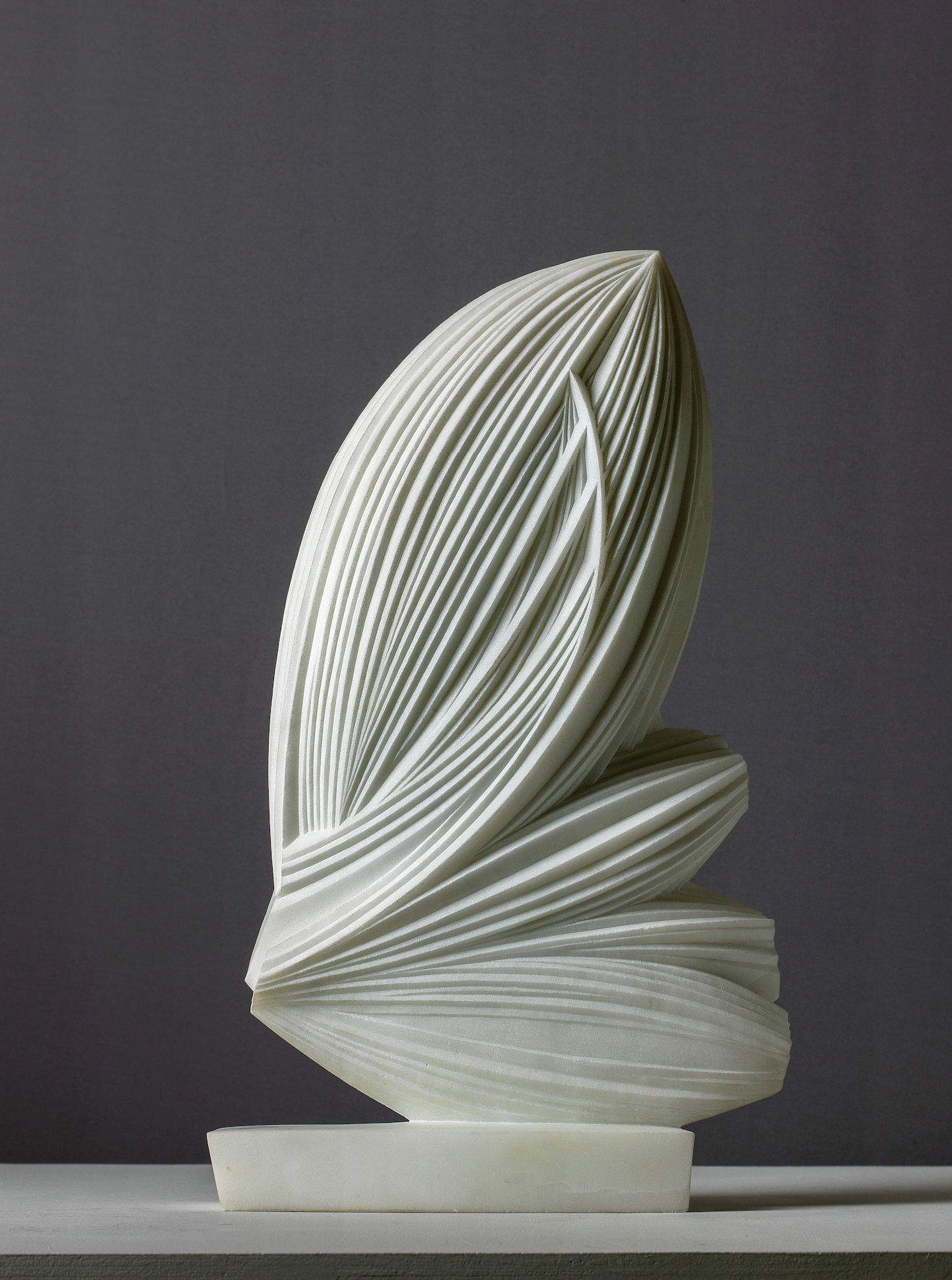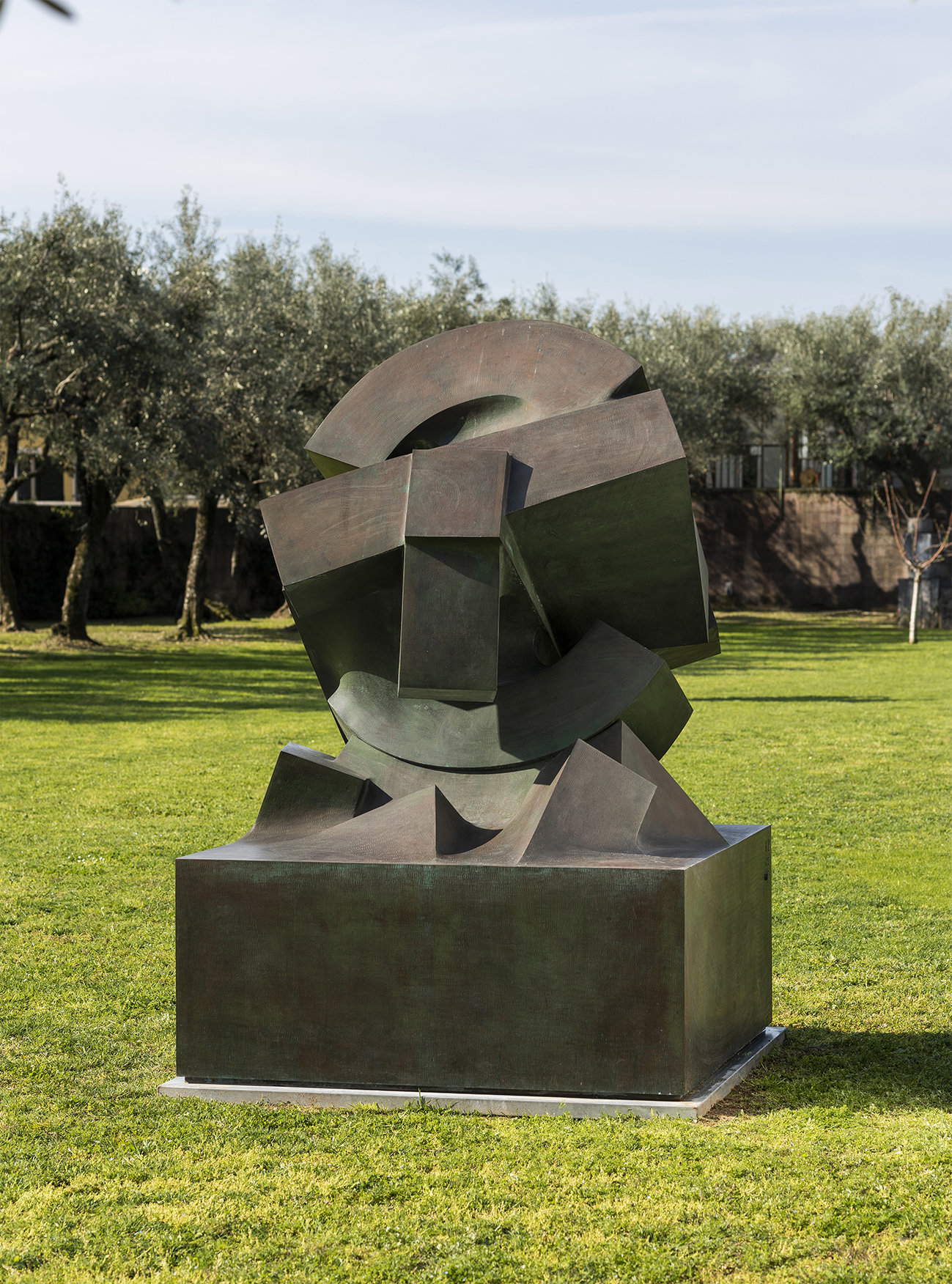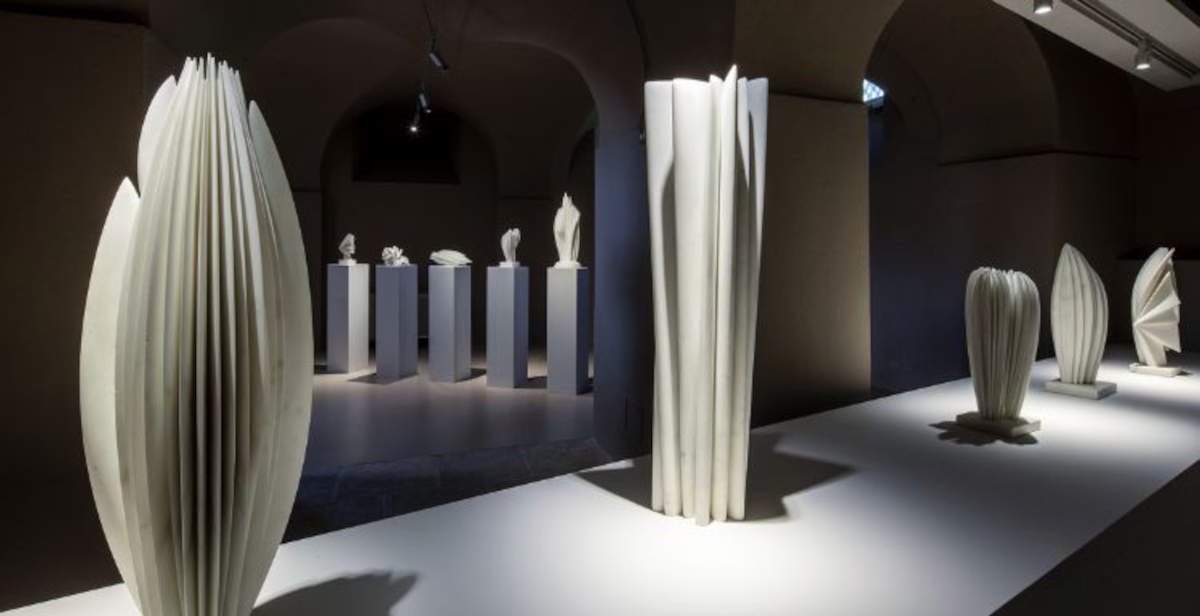On the occasion of the one hundred and tenth anniversary of the birth of Gigi Guadagnucci (Massa, 1915 - 2013) and ten years after the opening of the museum dedicated to him, the Municipal Administration of Massa, through the Department of Culture, presented a new exhibition featuring two central sculptors in the artistic panorama of the Italian twentieth century Gigi Guadagnucci Gio’ Pomodoro | Conversation on Nature. The exhibition, curated by Mirco Taddeucci, with the collaboration of Bruto Pomodoro, son of the artist and vice president of the Gio’ Pomodoro Archive, chaired by Rossella Farinotti, features critical texts by art historian Paolo Bolpagni, director of the Ragghianti Foundation. Open from June 21 until Aug. 21, 2025, the day of the summer solstice, the exhibition is housed at the Gigi Guadagnucci Museum, housed in the historic Villa Rinchiostra.
The project is part of the calendar of the city of Massa’s summer cultural initiatives for 2025 and aims to establish a comparison between Guadagnucci and Gio’ Pomodoro, two artists who, although coming from different paths, shared a close relationship with the Apuan territory and a deep reflection on the theme of nature. Both, in fact, lived and worked at the foot of the Apuan Alps for an important period of their careers, finding in the landscape a recurring element of inspiration.
“The comparison,” says Bruto Pomodoro, “with two internationally renowned sculptors who, from the avant-garde to the most innovative currents of the postwar period have worked in the Apuan territory using marble and bronze as the media of their poetics, offer an important cultural cue to demonstrate to future generations how fruitful that historical period was for contemporary Italian art, under the banner of the tradition of the new.”

Gigi Guadagnucci, active for many years in Paris, has developed a sculpture that moves between figurativeness and abstraction, with particular attention to plant and organic themes. His works, often sculpted in marble, are characterized by an almost immaterial lightness. His work is distinguished by the use of thin sheets, for lamellar structures that seem to defy gravity. Guadagnucci does not merely represent nature, but explores its internal articulation, shaping a rhythm that becomes structure. Works such as Liana, Rondine and Etoile, featured in the exhibition, exemplify the tendency to transform matter into transparency, marble into light, thanks to a refined technique and a profound knowledge of the sculptural medium.
Different, but not opposite, is the approach of Gio’ Pomodoro (Orciano di Pesaro, 1930 - Milan, 2002), who developed his own vision of sculpture as a system in constant tension. In his research, the natural element is not so much reproduced as analyzed in its internal mechanisms. The artist constructs forms that evoke a compressed energy, ready to expand. The evolution of his work moves from the organic forms of his origins to “surfaces in tension,” to cylindrical structures from which torsions and rotations develop. During his stay in Versilia, his work with stone allowed Pomodoro to deepen the notion of torsion as a structural principle. The Sun, in its meaning as a regulating and symbolic force, became a central figure at this stage, as evidenced by the work Sole Caduto per Galileo Galilei (Fallen Sun for Galileo Galilei), among the works on display in the exhibition.
The exhibition selection (housed between the ground and second floors of Villa Rinchiostra), includes a total of 18 works, including 13 sculptures and five drawings, one of which is previously unpublished. The works come partly from the permanent collection of the Guadagnucci Museum and partly from loans from public and private collections. On the ground floor, sculptures dialogue with the museum’s permanent core, while the second floor houses most of Gio’ Pomodoro’s works, along with three Guadagnucci works from the Matteucci Center for Modern Art Foundation and the private collection of the Massese artist’s wife.

Among Pomodoro’s most representative works in the exhibition are Folla, Tracce and, indeed, Sole Caduto for Galileo Galilei. Works that highlight the complexity of a research focused on the internal dynamics of matter and the idea of a sculpture that acts as a living organism, in constant movement. Guadagnucci, on the other hand, appears in the selection with some of his most emblematic works, which show the evolution of his style toward a progressive rarefaction of form.
The installation is designed to enhance the dialogue between the two artists, without forcing it. The aim is not to contrast two poetics, but to highlight the subtle relationships between two visions of sculpture that, although starting from different assumptions, meet on certain thematic nodes: the relationship with nature, the tension between matter and form, the importance of light and the internal rhythm of the works.
The museum’s outdoor spaces, particularly the 18th-century garden of the Villa Rinchiostra, are also part of the exhibition itinerary. One of Gio’ Pomodoro’s sculptures is placed outdoors, in a context that allows the work to dialogue directly with the landscape and vegetation. The choice once again underscores the focus on the theme of the relationship between art and nature, which is the underlying theme of the entire exhibition.
 |
| Conversations on nature between Gigi Guadagnucci and Gio' Pomodoro at Villa della Rinchiostra, Massa |
Warning: the translation into English of the original Italian article was created using automatic tools. We undertake to review all articles, but we do not guarantee the total absence of inaccuracies in the translation due to the program. You can find the original by clicking on the ITA button. If you find any mistake,please contact us.